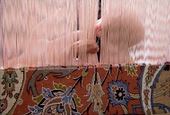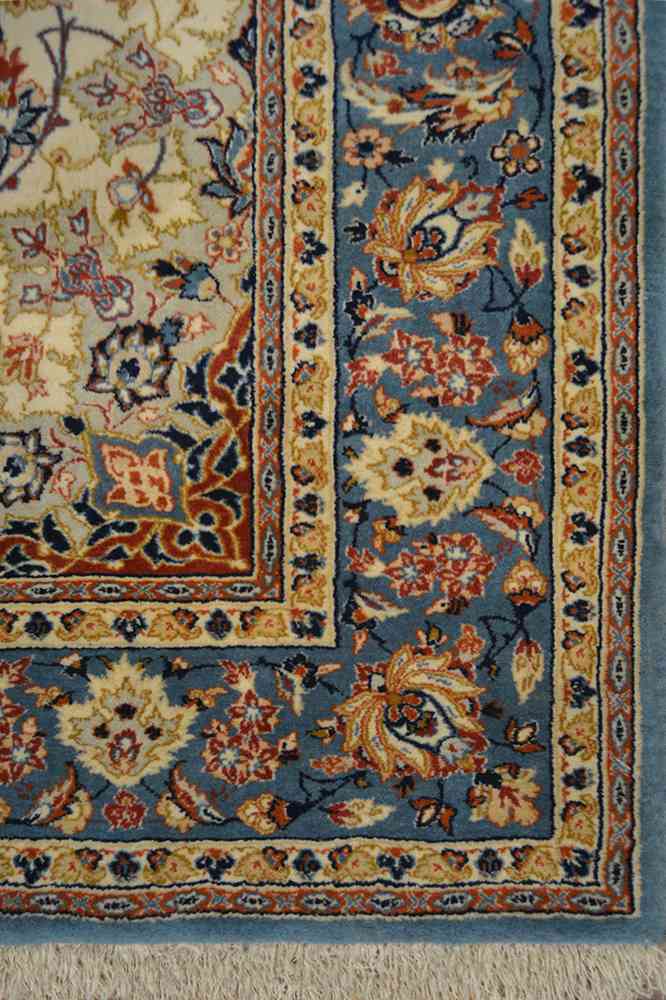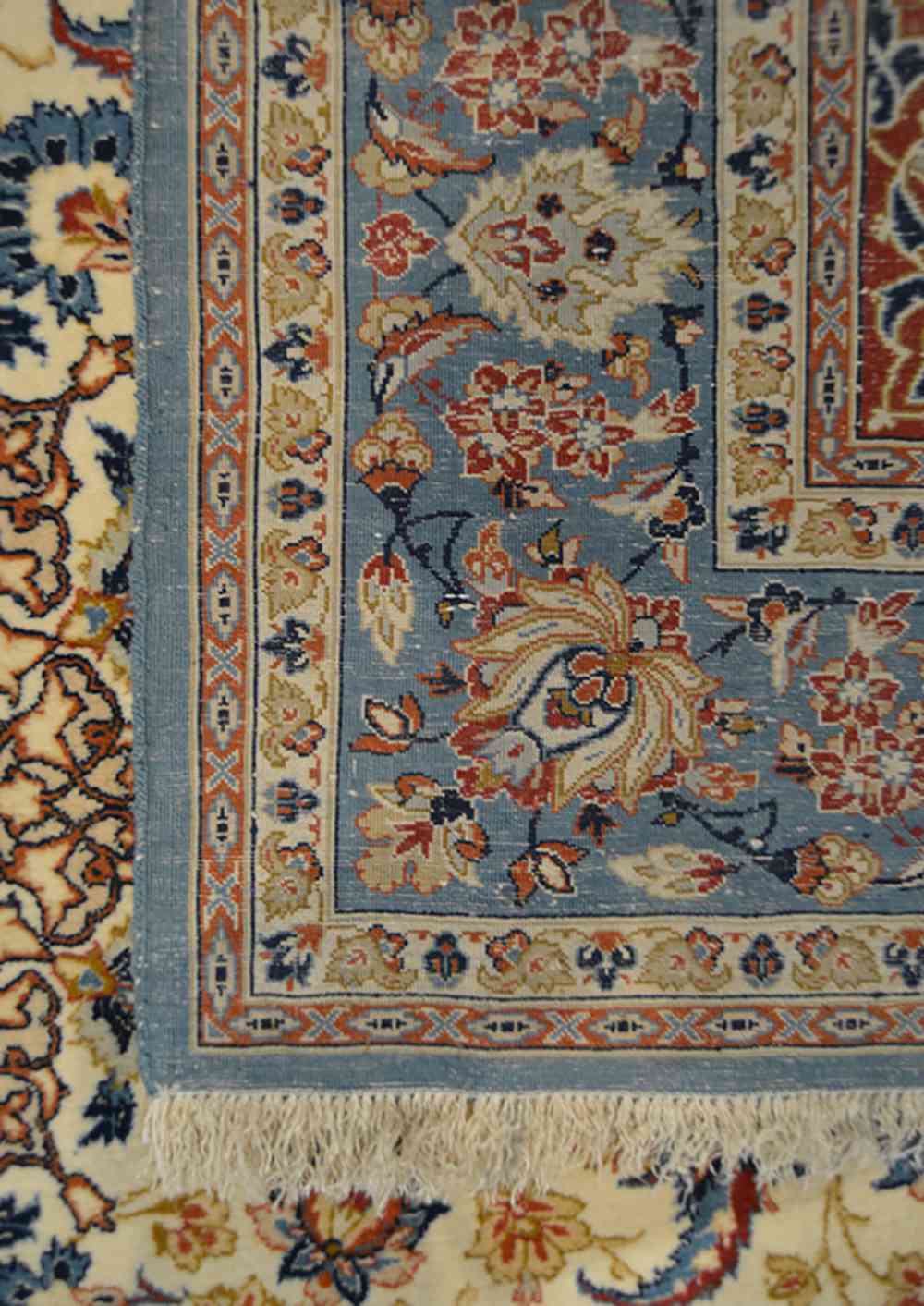A Brief History of Hispahan Rugs
 Hispahan (also known as Esfahan, Isfahan, Isphahan and Sepahan) has long been one of the centers for production of the famous Persian Rug. Weaving in Hispahan flourished in the Safavid era. But when the Afghans invaded Iran, ending the Safavid dynasty, the craft also became stagnant.
Hispahan (also known as Esfahan, Isfahan, Isphahan and Sepahan) has long been one of the centers for production of the famous Persian Rug. Weaving in Hispahan flourished in the Safavid era. But when the Afghans invaded Iran, ending the Safavid dynasty, the craft also became stagnant.
Not until 1920s, between two world wars, was weaving again taken seriously by the people of Isfahan. They started to weave Safavid designs and once again became one of the most important nexus' of the Iranian rug weaving industry. Isfahani carpets today are among the most wanted in world markets, having many customers in western countries.
Isfahani rugs and carpets usually have ivory backgrounds with blue, rose, and indigo motifs. Rugs and carpets often have very symmetrical and balanced designs. They usually have a single medallion that is surrounded with vines and palmettos and are of excellent quality.
These carpets are often made up of pure silk. A combination of silk and wool is also sometimes found. These materials make up the pile of the rugs, while cotton is usually used to hand knot a strong and durable foundation. In finer Hispahans, silk is used as a base.
To learn more about iranian rugs, visit our
Persian Rugs section.
Sources and inspiration: Bérinstain, Valérie, et al. L'art du tapis dans le monde (The art of carpets in the world). Paris: Mengès, 1996. Print.; Jerrehian Jr., Aram K.A. Oriental Rug Primer. Philadelphia: Running Press, 1980. Print.; Herbert, Janice Summers. Oriental Rugs, New York: Macmillan, 1982. Print.; Hackmack, Adolf. Chinese Carpets and Rugs, Rutland and Tokyo: Tuttle, 1980. Print. ; De Moubray, Amicia, and David Black. Carpets for the home, London: Laurence King Publishing, 1999. Print.; Jacobsen, Charles. Oriental Rugs A Complete Guide, Rutland and Tokyo: Tuttle, 1962. Print.; Bashir, S. (n.d.). Personal interview.; Web site sources and dates of consultation vary (to be confirmed). Without prejudice to official usage.









 Hispahan (also known as Esfahan, Isfahan, Isphahan and Sepahan) has long been one of the centers for production of the famous Persian Rug. Weaving in Hispahan flourished in the Safavid era. But when the Afghans invaded Iran, ending the Safavid dynasty, the craft also became stagnant.
Hispahan (also known as Esfahan, Isfahan, Isphahan and Sepahan) has long been one of the centers for production of the famous Persian Rug. Weaving in Hispahan flourished in the Safavid era. But when the Afghans invaded Iran, ending the Safavid dynasty, the craft also became stagnant. Tapis d'Orient Bashir | Bashir Persian Rugs
Tapis d'Orient Bashir | Bashir Persian Rugs
 @tapisbashir
@tapisbashir
 @bashircarpets
@bashircarpets
 @bashircarpets
@bashircarpets